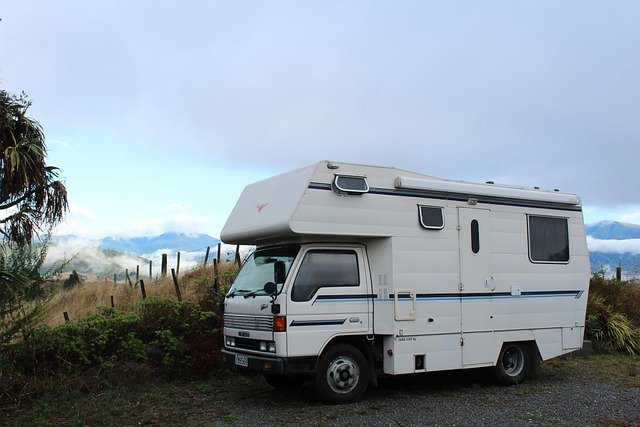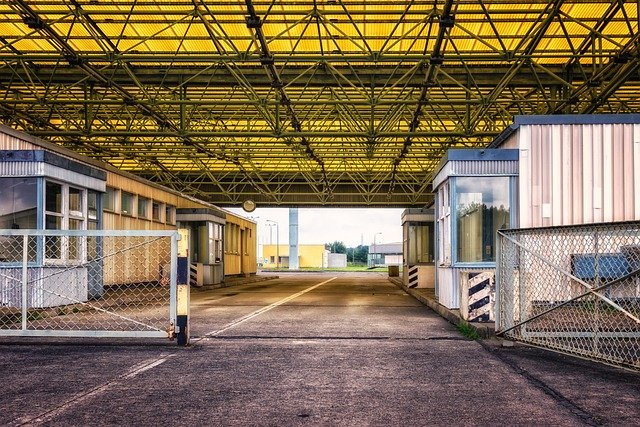Building a Travel-Proof Emergency Fund
Your emergency fund shouldn’t be a piggy bank that lives in one country and freezes the moment you cross a border. For a traveling creator or contractor, your float has to survive card theft, FX shocks, bank outages, and a surprise flight home. This guide shows you how to design a travel-proof, multi-currency, multi-institution emergency fund—with a runway calculator you can fill out today.
Introduction: Why a traditional emergency fund doesn’t work for nomads
Most advice says: “save 3–6 months in a single savings account.” That’s fine if you live, work, and bank in one place. Nomads are different. You operate across time zones, jurisdictions, and currencies, often relying on fintech rails that occasionally block new-country logins or flag your activity for routine “compliance reviews.” You may get hit by FX swings that quietly reduce your purchasing power by 5–10% in a quarter. Your clients might pay in USD while your rent is in EUR and your medical bill is in THB. A single-country, single-bank approach leaves you exposed to:
- Access risk: app won’t log in; card freezes; 3D Secure SMS fails on a foreign SIM.
- Currency risk: a falling home currency turns six months of cash into four.
- Counterparty risk: if one bank/broker has an outage or compliance hold, you’re stuck.
- Settlement delays: moving money across borders can be T+1 to T+5. Emergencies are not.
Your emergency fund has one job: be there, instantly, in the right currency. That means layers of liquidity, a currency mix, and redundancy across 2–3 institutions. It also means running an honest runway calculation that reflects your actual travel costs, FX buffers, and one-off “get-me-home” scenarios. Treat it like gear you’d take on a trek: light, reliable, and ready.
The unique risks nomads face
Medical emergencies abroad
Even with travel insurance, you’ll face upfront costs: ER intake deposits, out-of-network clinics, or prescriptions paid cash before reimbursement. Some hospitals demand credit card pre-authorization or a cash deposit—and they don’t care that your insurer will reimburse later. Your float should cover at least your policy deductible + likely co-pays + a 48–72h living cushion while you sort documents. Keep funds in a currency local providers accept (often USD or EUR) and in an account you can access on your phone—no desktop OTP required. Store your policy PDF, claim hotline, and passport MRZ scan with your float plan so you can prove identity and coverage on the spot.
Sudden travel restrictions or evacuations
Border closures, strikes, or civil unrest can turn a $200 hop into a $1,200 multi-leg evacuation plus last-minute lodging. Your emergency fund should explicitly include a “flight-home scenario” line item—think one-way fare to a safe hub + 3 nights of accommodation + local transfers. Time matters: if funds sit in a T+2 vehicle (e.g., some money market shares), you can’t deploy them. Keep Tier 1 cash ready for same-day bookings and Tier 2 for follow-up costs (see Liquidity Layers).
Income volatility and client payment delays
Nomad cash flow tends to be lumpy. A big client pays late; a platform suspends payouts pending verification; you change countries and risk holds because your IP suddenly shows up in another region. Model a Volatility Cushion—e.g., assume 50% income drop for two months—and bake it into your target float. Automate sweep rules that send a % of every invoice to your emergency stash before you see it.
Currency fluctuations
You might earn in USD, spend in EUR, and live in MXN this quarter. A move in DXY or local inflation can quietly erase your margin. Counter with a currency mix (base + USD + EUR + small local) and an FX buffer (e.g., +8–10% in your calculator). For longer stays, pre-fund local currency modestly to avoid worst-case rates during a spike.
Lost/stolen cards or frozen accounts
Cards get skimmed; apps lock out when you switch SIMs. If your only emergency cash sits behind a single card/app, you’re camping on a cliff edge. Store your float across two cards, two apps, and two institutions, with at least one account that doesn’t require your current phone number for access (e.g., hardware key or app-based OTP).
How much do you need?
The 3–6 month rule adapted for travel
Start with the classic range (3–6 months of essential expenses), then adjust for nomad-specific factors:
- Travel premium (10–20%) for transient costs (visas, short-term rentals, data plans).
- FX buffer (5–10%) to absorb currency swings.
- One-offs: emergency flight, medical deductible, gear replacement.
- Income cushion: % of monthly spend to cover delayed/vanished earnings.
Your “nomad emergency fund” is not your long-term investment account; it’s a shock absorber. Better to hold a bit extra than to sell assets or borrow at the worst time.
Runway calculator: fixed vs variable costs
Break your month into fixed (rent/insurance/subscriptions) and variable (food/transport/leisure). Use actual numbers from the last 90 days; don’t guess. Then:
Monthly Spend = Fixed + Variable
Buffered Monthly = Monthly Spend × (1 + Emergency% + FX%)
Runway Core = Buffered Monthly × Target Months
One-off Reserve = Flight + Medical + Gear
Income Cushion = Buffered Monthly × Volatility%
Total Target Float = Runway Core + One-off Reserve + Income Cushion
To make this easy, grab the editable CSV (compatible with Google Sheets/Excel):
- Runway Calculator: Download CSV
- Allocation Planner: Download CSV
Fill the example row, then copy it with your numbers per destination.
Adjusting for destination cost-of-living
Your runway in Bangkok ≠ your runway in Lisbon. For trips >30 days, duplicate the calculator per city and weight by stay length. If you chase shoulder-season deals, your “variable” bucket drops; if you land in peak-season London, it spikes. Keep a living COL note in your calculator (cowork prices, SIM/eSIM costs, transit pass, average meals) so you can re-estimate in minutes.
See real hold amounts in Hotel Holds, Car Deposits & Refunds.
Safety margin for flight-home scenarios
Add a hard “get home” budget to the One-off Reserve:
- One-way ticket to your safe hub (or home) at peak pricing.
- 3 nights hotel near the airport or embassy.
- Local transport and visa fees if required.
This usually lands between €800–€2,000 depending on your routes.
Currency mix strategy
Home currency (base)
Hold at least 40–50% in your base currency (where you file taxes or keep long-term obligations). It anchors your purchasing power and reduces mental FX load when paying insurance or annual subscriptions.
USD (universal liquidity)
USD is the world’s “get things done” currency: medical deposits, last-minute flights, some landlord requests. Parking 20–40% in USD (in a Tier 2/3 vehicle you can liquidate quickly) gives you versatility. Avoid exotic instruments—keep it cash or cash-like.
EUR or other major currencies
If you spend time in the Eurozone or pay European services, keep 10–30% in EUR. For other corridors (GBP, JPY, CAD, AUD), allocate a practical slice aligned with your itinerary—not as a speculative bet.
Local currency (limited amounts)
Top up local CCY only for the next 2–4 weeks of spend. It reduces FX fees and card declines, but don’t hoard. Political or monetary shocks can trap value in a currency you’ll never use again.
Where to hold your nomad float
High-yield savings accounts (multi-currency)
Priority: instant or same-day access, no penalties, card + transfer options. Multi-currency HYSAs or travel-friendly banks are perfect Tier 1/2 homes for your float. Confirm ATM and wire capabilities in your current region.
Money market funds (accessibility vs yield)
For Tier 3 (2–5 day access), short-duration government money market funds can add yield while staying cash-like. Check settlement, cutoff times, and redemption rules before relying on them in a crisis. Don’t park money here you might need today.
Split across 2–3 institutions (counterparty risk)
Redundancy beats yield. Two banks + one broker (or vice versa) is a common pattern. Aim for independent rails (one traditional bank, one fintech, one broker) to diversify login methods and card networks.
Small cash reserves (physical)
Carry a modest cash buffer (e.g., $100–$300 + €100) for airport SIMs, taxis, and offline situations. Store separately from your wallet to hedge theft.
Liquidity layers
Tier 1: Instant access (checking, mobile banking)
- Use for: medical deposits, urgent flights, card theft events.
- Access: debit card, app transfer, ATM.
- Target share: 20–40% of float.
- Rule: No lockups, no settlement delays.
Tier 2: Same-day access (savings accounts)
- Use for: follow-up costs within 24h.
- Access: internal transfer to Tier 1, SEPA/ACH to self, instant rails where available.
- Target share: 30–50%.
- Rule: Prefer institutions with 24/7 internal moves and real-time notifications.
Tier 3: 2–5 day access (money market, short-term bonds)
- Use for: sustained crises or income droughts.
- Access: redemption then wire to Tier 1/2.
- Target share: 20–30%.
- Rule: Know cutoff times and test a small redemption before you need a big one.
Avoiding the investment temptation
Why your emergency fund shouldn’t be in stocks
Equities are for growth, not emergencies. The market can drop 20–30% precisely when you need cash, forcing you to sell low. If it can fall hard in a week, it doesn’t belong in your nomad emergency fund.
The volatility/liquidity trade-off
Higher yield usually means less liquidity or more risk. Your float’s purpose is reliability, not return. If you crave yield, ring-fence a separate opportunity bucket; don’t gamble the parachute you may pull at 3AM.
Opportunity cost vs insurance cost
Yes, “idle” cash has an opportunity cost. But the insurance value of instant access usually outweighs a few extra basis points. Reframe it: you’re buying certainty. That certainty lets you take smarter risks elsewhere.
Building your float while traveling
Automated savings from income
Set a fixed % sweep (e.g., 10–20% of every invoice) into your Tier 2 account. If income is irregular, automate sweeps by amount (e.g., first €500 of each payout) + a monthly top-up on the 1st.
Windfall allocation rules
Got a tax refund or a fat milestone payment? Use a rule of thirds:
- ⅓ to emergency float until you hit target.
- ⅓ to investments/retirement.
- ⅓ to guilt-free spending (you’re human).
Side hustle dedicated to float-building
Spin up a tiny, reliable side stream (templates, tutoring, micro-SaaS) dedicated to the float until it’s fully funded. The psychology matters: ring-fenced income grows the buffer faster and makes you less tempted to raid it.
Testing your system: the annual drill
Can you access funds from your current location?
From your current country, log in to each institution over mobile data (not only Wi-Fi), confirm 2FA works, and that you can pull your current balance. If one app needs a SMS to a dead SIM, fix it now (switch to app-based 2FA or update the number).
How fast can you wire money to yourself?
Send a small test transfer from Tier 3 → Tier 1 via your normal route (MMF redeem → bank → card). Record the timestamps and cutoffs. If it took 3 business days last time, assume 5 in a crisis and size your Tier 1/2 accordingly.
ATM access verification
Withdraw a small amount with each primary and backup card. Verify the PIN, the daily limit, and whether your bank flags the withdrawal. Store the fee schedule in your vault so you’re not surprised by out-of-network rates.
Real scenarios: when you’ll need it
- Clinic wants a deposit now: You tap Tier 1 (USD/EUR account) for the card pre-auth, then move Tier 2 over to replenish.
- Sudden border switch: You buy a last-minute flight + accommodation from Tier 1, then pull Tier 2 same-day to cover the next 72 hours. Tier 3 redeems in the background.
- Client pauses payouts: Your Income Cushion plus Runway Core buys 6–8 weeks to replace work without panic.
- Card compromised: You freeze card A, switch to card B at another institution, and still have cash/ATM as fallback.
Sleep better knowing you can handle crisis
A nomad emergency fund isn’t a pile of cash—it’s a system: realistic runway math, smart currency mix, three liquidity layers, and redundancy across institutions. Build it once, test it annually, and your future self will thank you the day something breaks. The goal isn’t perfection; it’s resilience. With a funded float, you can make calm, high-quality decisions when life gets loud.
If access breaks mid-route, recovery in Lost Phone on Day Three; cash moments → ATM Strategy for Travelers.



